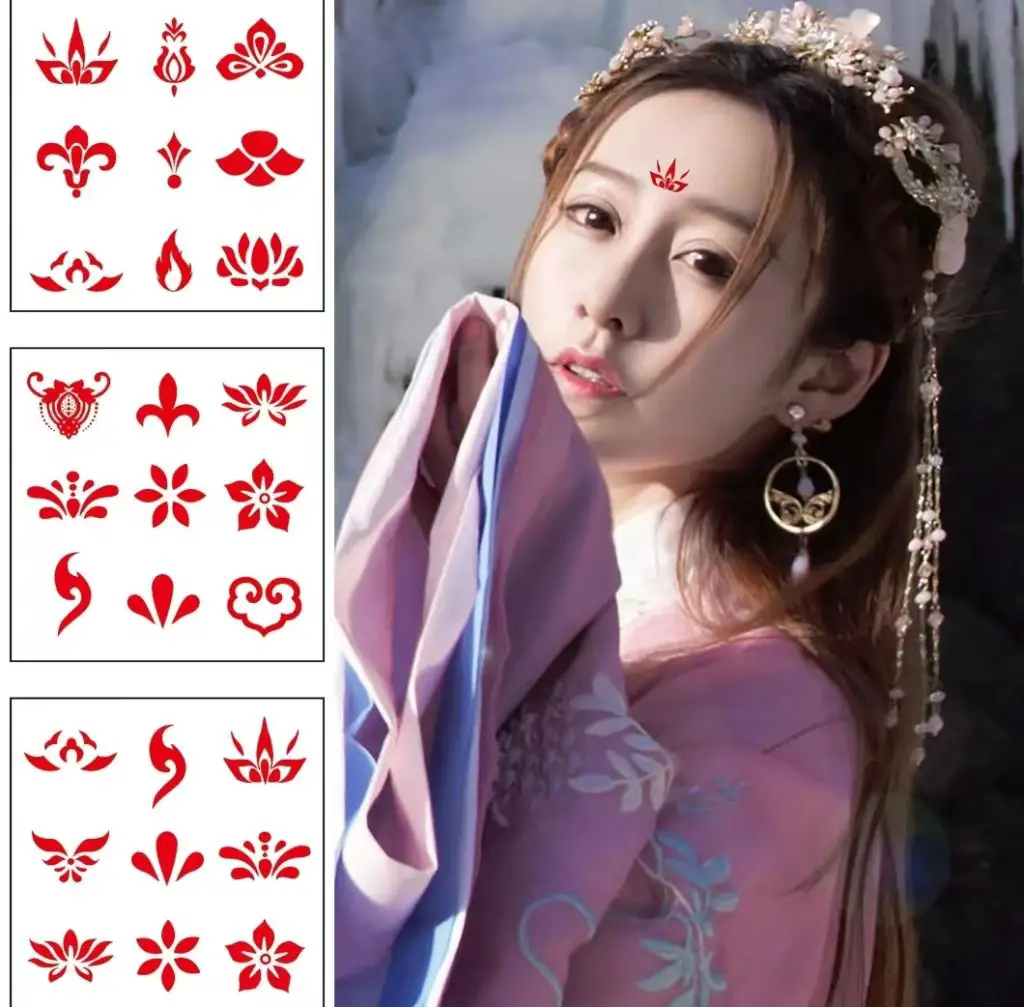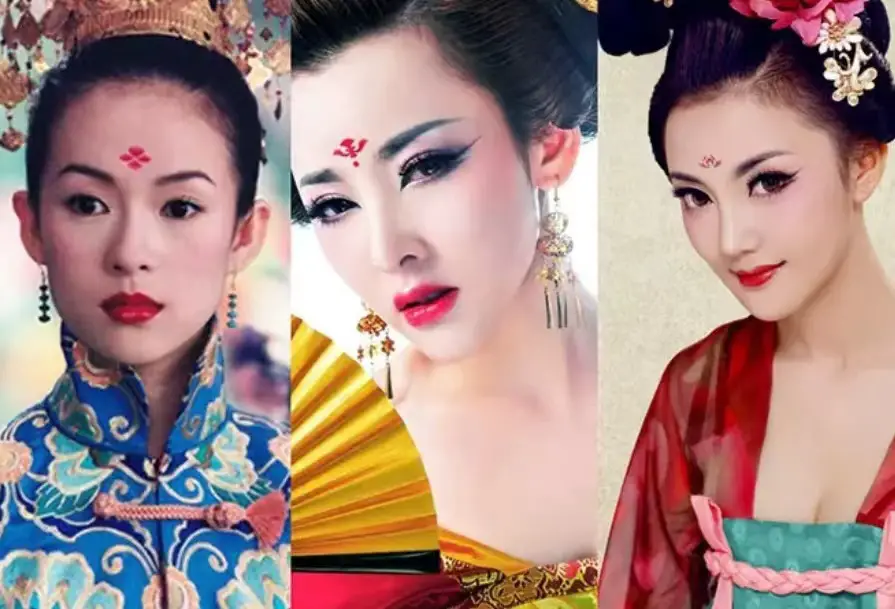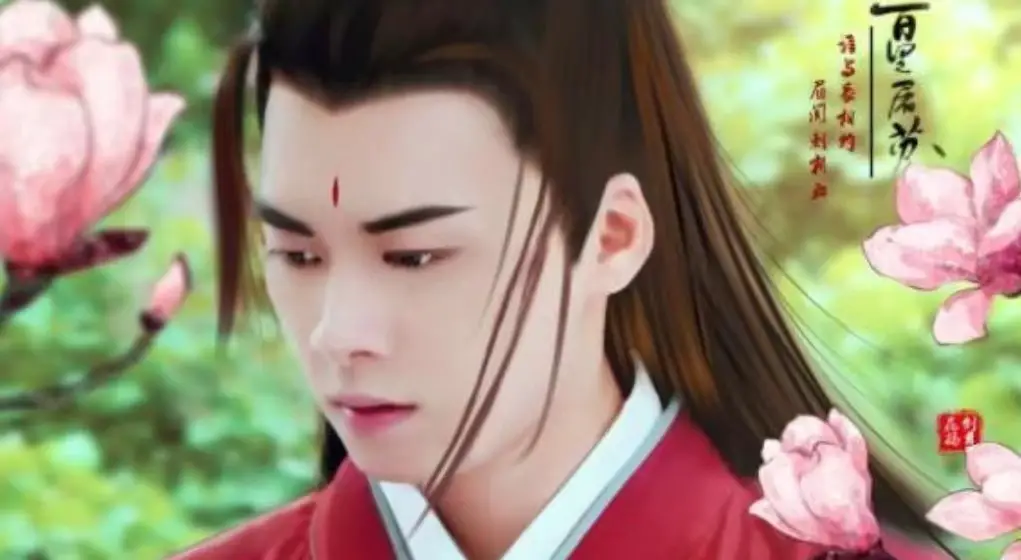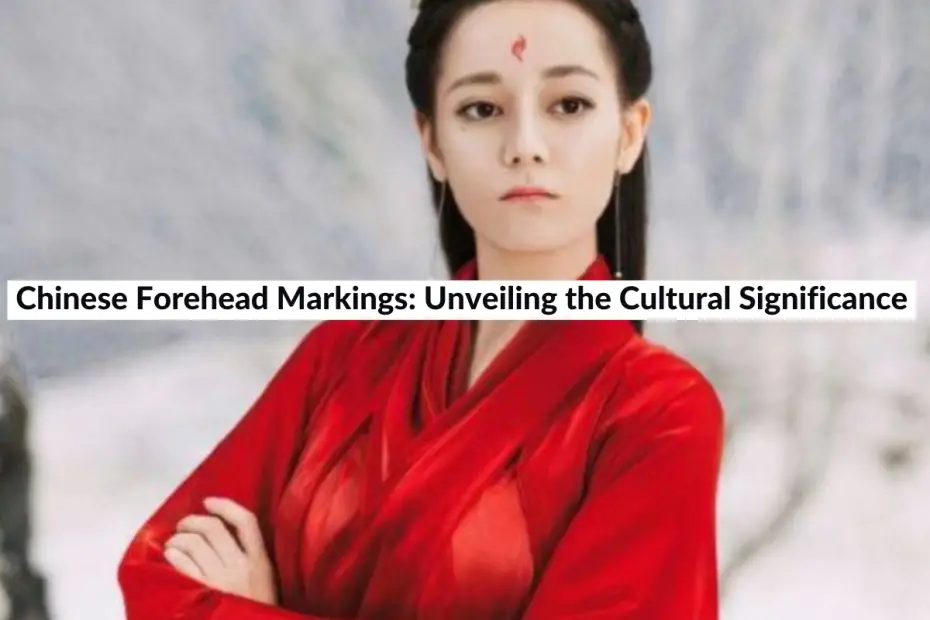Chinese forehead markings, also known as Chinese bindi or Chinese forehead dots, hold deep-rooted significance within Chinese culture.
These markings are commonly placed on the forehead, adding an enchanting touch to one’s appearance.
By understanding the origins and meaning behind these markings, we can gain insights into the rich cultural heritage of China.🔴
What are Chinese Forehead Markings?

Chinese forehead markings refer to the decorative symbols or designs applied to the forehead, typically using colored pigments, cosmetics, or temporary tattoos.
These markings are often intricate and aesthetically appealing, enhancing the facial features of both men and women. Chinese forehead markings have a long-standing tradition and carry multifaceted meanings, reflecting the values, beliefs, and traditions of Chinese society.
What is the makeup style on trend in modern china? Use these products to creat the same look.✌Chinese Forehead Markings Meaning
The Huadian or forehead decoration was said to have originated in the South Dynasty, when the Shouyang Princess was taking a walk in the palace in early spring and a light breeze brought a plum blossom onto her forehead.
The plum blossom for some reason could not be washed off or removed in any way.
The Red Dot on the Forehead in China

The practice of wearing a red dot on the forehead in China can be observed during festive occasions, religious ceremonies, or cultural celebrations.
Almost every Chinese kid had it when they were young and joined the school cultural events for Children’s Day.😉
And if you ask your parents why there is a red dot, they will say it represents the opening of the wisdom eye.
Then, teachers would give lectures on basic principles of behavior. The ceremony represents that the children are ready to take a step on the lifelong pursuit of knowledge.
In traditional Chinese Makeup, we not only have red dot but also red eye.
The Flower on the Chinese Forehead

Huadian, also known as “huazi” or “mianhua,” is a traditional Chinese women’s ornamental forehead makeup. It is located between the eyebrows and sometimes extends to the cheeks, temples, and dimples.
The huadian comes in various shapes and patterns, including flowers, plum blossoms, butterflies, coins, peaches, birds, phoenixes, and other animals. It is typically red in color but can also be found in different colors like green and gold. Different materials such as cuidian, gold leaf, silver leaf, paper, fish scales, feathers, pearls, jewels, and dragonfly wings can be used to create the huadian.
The application of huadian is primarily on the forehead between the eyebrows. However, it can also be applied on the cheeks, temples, and dimples. In some cases, when applied on the dimples, it is referred to as “mianye.” During the Tang dynasty and the Five Dynasties and Ten Kingdoms period, mianye extended high up to the sides of the nose.
Huadian was popular during the Tang and Song dynasties but declined in popularity during the Yuan dynasty. Today, it is often combined with the wearing of hanfu, the traditional clothing of the Han Chinese, and remains an integral part of Chinese clothing culture.
Learn Flower Meaning in Chinese Culture ✨Chinese Forehead Markings for Males

In Chinese wuxia, xianxia, and danmei novel adaptations, there is a common visual motif that portrays the significance of characters. Specifically, a red dot observed on men typically indicates their possession of supernatural abilities or a connection to the supernatural realm.
Conclusion
Chinese forehead markings offer a captivating glimpse into the rich cultural heritage of China. With their historical significance, symbolic meanings, and evolving practices, these markings continue to be cherished and celebrated.
FAQs:
Q: Why do Chinese people wear forehead markings?
A: Chinese forehead markings are worn for various reasons, including cultural traditions, spiritual beliefs, fashion statements, and personal expressions of identity or aspirations.
Q: Is the red dot on the forehead specific to China?
A: While the red dot on the forehead is commonly associated with India and Hindu culture, it also holds significant cultural meaning in China, symbolizing good luck and auspiciousness.
Q: How have Chinese forehead markings evolved over time?
A: Chinese forehead markings have evolved from their ancient spiritual and ritualistic origins to incorporate contemporary fashion trends, personal expressions, and cultural adaptations.
Q: Are Chinese forehead markings still commonly seen today?
A: While the prevalence of Chinese forehead markings has decreased over time, they are still observed during traditional ceremonies, cultural festivals, and by individuals who value their cultural heritage or wish to make a fashion statement.


